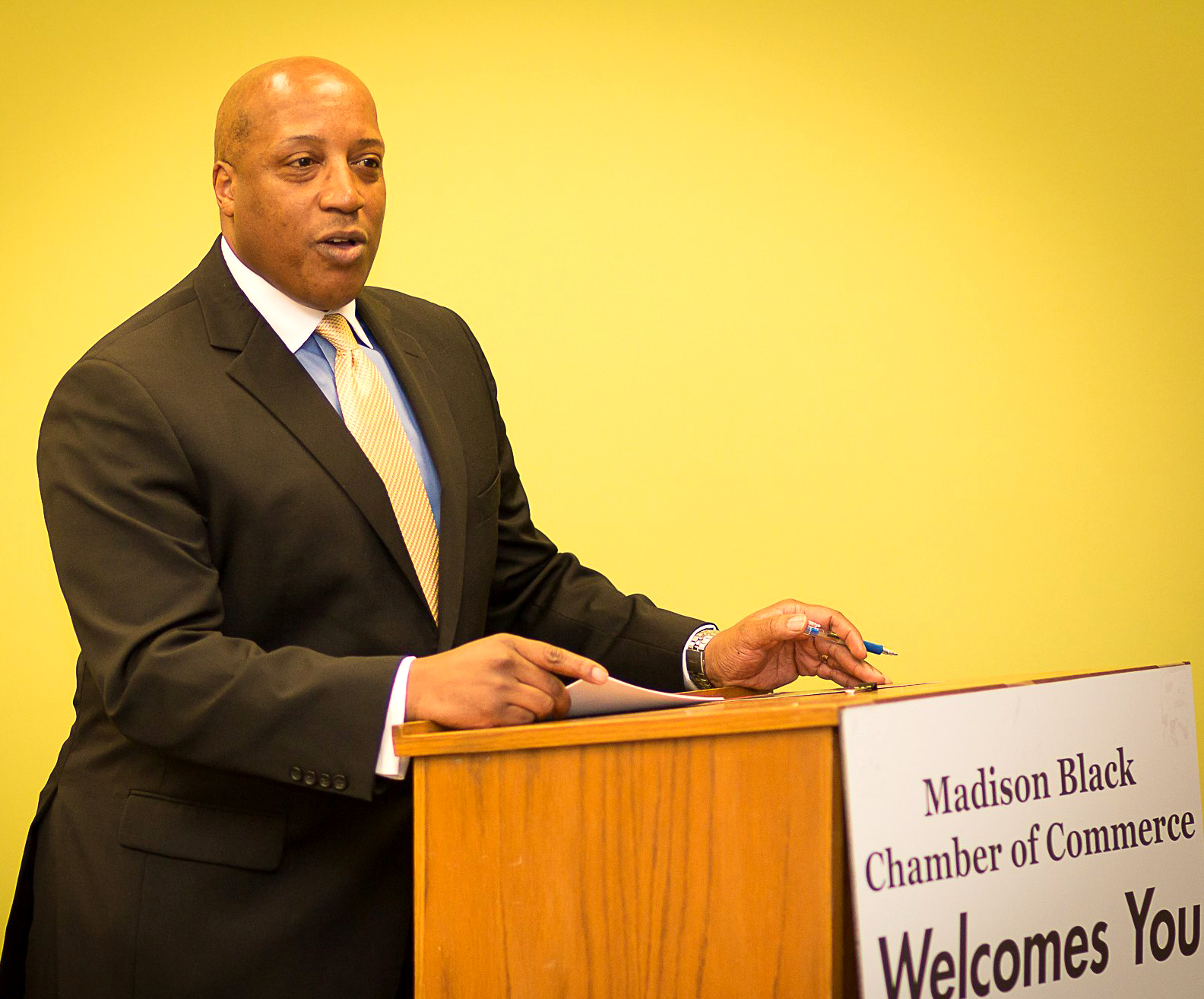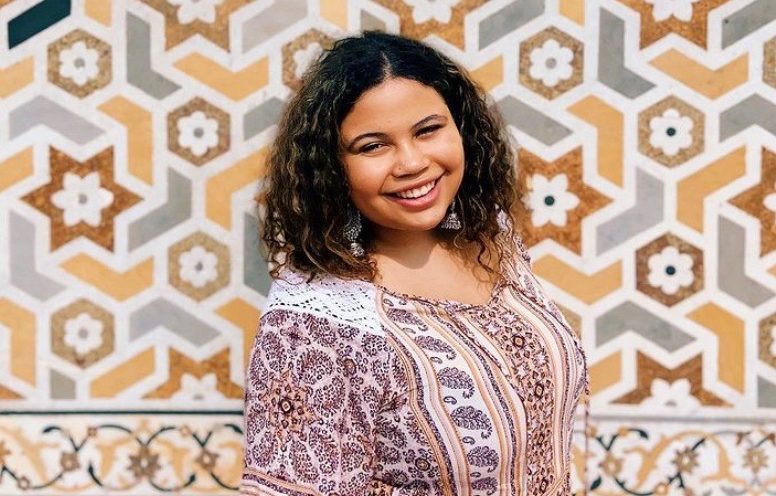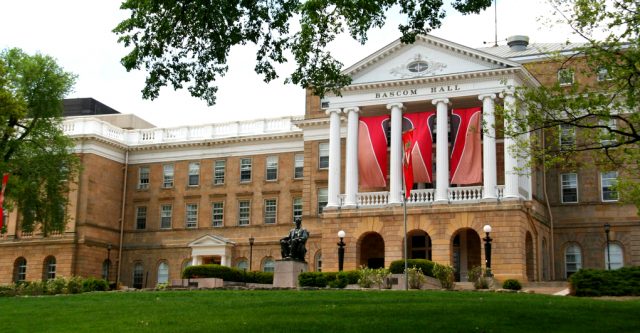The University of Wisconsin-Madison unveiled a series of COVID-19 prevention measures intended to limit the spread of the novel coronavirus as students return to a fully reopened campus this fall.
As limited vaccine availability and lower vaccination rates persist among Madison’s communities of color and the threat of the rapidly spreading Delta variant looms, however, the potential for a citywide outbreak has raised alarms among community leaders. In Dane County, 63 percent of white residents are fully vaccinated, compared to just 36 percent of Black residents and 56 percent of Latino residents.
In lieu of requiring vaccinations for all incoming students, faculty and staff, UW-Madison has reinstated a mask mandate inside all on-campus buildings and continued to offer virus testing and vaccines.
Though vaccines prove to be the most effective method to negate the spread of COVID-19, UW is not currently planning to require its students or employees to receive a shot — though leaders announced yesterday that those who do not provide proof of vaccination will be required to be tested weekly.
With vaccine mandates currently off the table and cases rising across Wisconsin–even as the state nears a vaccination rate of 65%–UW-Madison Director of News and Media Relations, Meredith McGlone said Chancellor Rebecca Blank is weighing the possibility of broadening the scope of its weekly testing requirements for unvaccinated students in residence halls.
The recent policies enacted by the university come nearly one year after a COVID-19 outbreak on campus last fall forced a lockdown of UW-Madison’s two largest dormitories and generated a spike in case numbers throughout Madison.
While Wisconsin’s largest university prepares for a semester of in-person learning, community leadership in the city continues to push for higher vaccination rates among residents of color.
Chief Executive Officer of the Rebalanced-Life Wellness Organization (RLWA) and White House COVID-19 Rapid Response team member Aaron Perry said he began promoting vaccinations to his barber shop clients as recently as last spring in order to combat hesitancy, yielding fruitful results once shots became available earlier this year.

“We started having that conversation about vaccine confidence a year ago in May,” Perry said. “We have a very good relationship with a lot of our men, and for our very first vaccine clinic we had about 85 people that came in and got vaccinated. In addition to that, we sent another 20 or 30 to a pharmacy to get vaccinated.”
Perry said he sits on a committee referred to as “Shots at the Shop,” a White House-affiliated initiative which seeks to promote vaccinations for Black men nationwide through training employees and owners of Black-owned barbershops and hair salons to dispel myths and disinformation surrounding COVID-19 vaccines and foster trust between vaccine-wary customers and medical professionals.
Distrust of the medical community among Black Americans is not unfounded following a well-documented history of past exploitation at the hands of the federal government through faux vaccine research efforts such as the Tuskegee Syphilis Study.
Yet, Perry said the greatest hurdle he faced while encouraging clients to get their shots was not an outright rejection of vaccinations overall, but rather concerns regarding the rapid rollout of COVID-19 vaccines and the contes of the liquid injected into a recipient’s arm.
“What we’ve determined from doing a lot of our Facebook Live virtual support groups, is that there was not a great deal of mistrust,” Perry said. “Guys were very paranoid about the process. Guys, we’re not necessarily saying ‘I’m not going to get vaccinated.’ what they were saying is, ‘I need to know a little more information about what it is.’”
Despite what he described as the early success of Shots at the Shop in its ability to convince community members in Madison to take the COVID-19 vaccine, Perry said he noticed vaccines were less readily available to Black Wisconsinites.
Perry said communities of color, particularly those located in urban centers, faced greater obstacles in obtaining vaccines and learning where to receive shots compared to more suburban, majority white areas.
“We had challenges finding vaccinations for the Black community,” Perry said. “ We had guys actually being told that they have to drive as far as Black River Falls and Mauston, whereas we saw that other groups were getting vaccinated in Waunakee and some of these other places. It gave the appearance that there were other groups that were more in line to get vaccinated versus some of these communities that were harder to reach.”
A lack of vaccine availability is not unique to Madison’s Black residents. Other communities of color face lower shot numbers despite the high overall vaccination rate in Dane County.
Madison District 8 Alder Juliana Bennett said pockets of Latino population in the city are facing alarmingly low rates of vaccination as the 2021-2022 academic year–and the subsequent influx of students in Madison–approaches.

“I actually recently became aware that in the Allied Drive area, which is historically and currently a more diverse part of town that’s populated by mostly black and brown people, and the vaccination rates amongst the Latino community there are pretty low, which is pretty concerning,” Bennett said.
With the beginning of the fall semester right around the corner, the potential for an outbreak remains a present threat. According to the Center for Disease Control (CDC), Dane County is already at-risk for a high COVID-19 transmission rate a month ahead of UW-Madison resuming classes.
The university anticipates a high vaccination rate among its students, faculty and staff, but memories of last year’s residence hall outbreaks–and the subsequent rise in citywide case numbers–remains fresh in the memory of students and Madisonians.
Bennett said she believes, for the time being, that UW-Madison appears to have readjusted its strategy to prevent a surge in COVID-19 cases in the coming months, but expressed concern regarding the current lack of a hybrid learning model for students and professors.
“From my observations, they are hyper-aware of a possible outbreak. And they don’t want a repeat of what happened last year, but that doesn’t mean that they can’t be doing more,” Bennett said. “One thing that’s been very frustrating to me is that UW is actually preventing students from receiving accommodations like taking classes online. They’re asking professors or TA’s go on leave if they don’t want to have in person classes, which is super concerning to me because I wish that there was an option to have a hybrid model.”
Perry said he is alarmed by the possibility of an uptick in COVID-19 cases in the coming months and the potential for a ripple effect which could impact Madison’s most vulnerable communities.
However, Perry also said he is unwilling to lay blame for an outbreak entirely on the shoulders of UW-Madison, acknowledging both the high rate of transmissibility of the virus and the role that vaccine hesitancy among those who can access a shot could have in generating a community-wide outbreak
“That’s a stretch [to blame UW-Madison],” Perry said. “When we have students coming in from all parts of the country, all parts of the world, you know, you do run that risk of having them bring this back to the community. So, I think we ought to be concerned, but to me it would be a stretch to say that.”
Bennett said she shared similar worries regarding the potential for any rising case numbers among UW-Madison students and faculty to spill over into the residential population.
Yet, Bennett expressed optimism that she believes UW-Madison appears to be better prepared to manage a COVID-19 outbreak than it was the previous year.
“I think that UW did learn from their mistakes,” Bennett said “If there was an outbreak, I think that they would take the necessary precautions to shut down classes and identify those early factors.”




























